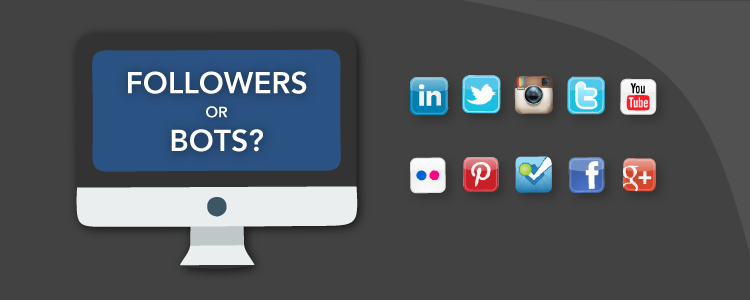Katy Perry: 27,284,129 / 34,979,652
Lady Gaga: 28,190,391 / 36,141,527
Barack Obama: 23,555,770 / 29,817,431
Taylor Swift: 21,262,301 / 26,249,754
Any idea what these numbers could mean? I’ll give you a couple hints:
- They are linked to social media and how Twitter is lying to you
- They are fractions describing parts of a whole (in case you need a refresher on the definition of a fraction)
- The average of these fractions is equal to 78.85%
- These numbers are not what you want to see for your company’s Twitter account
Guess it yet? Alright fine, I’ll clue you in on a little secret here that none of the people above want you to know: the fractions above represent the number of combined accounts that are considered fake or inactive divided by the total followers that follow the individuals listed.
Putting it simply, four of the most popular people on this planet have a Twitter following of 80% either fake, bots, or inactive accounts. Sure, my girl T-Swift looks awesome and popular with her 21 million plus followers, but it is a little less glamorous when you realize that only about 5 million of those are living, breathing people.
Social media marketing is just now becoming a profitable reality for B2B companies, which means that even the best B2B social media marketers are still growing and learning about this exploding trend. To make social media a bit more relatable for those of us that may be just dipping our toe in the water, I am going to draw some parallels between social media marketing and its connection to email marketing.
- List Building – Any of us who are active on Twitter know the accounts by now, “I can get you 10,000 followers for $10!” I have never considered something like this as I prefer to build my following organically with (mostly) legitimate followers. Obviously we see in the above statistics; however, that many people HAVE subscribed to the notion of buying and endorsing illegitimate followers to make themselves appear more popular or as an industry thought leader to real people. Buying email address lists can be even more damaging to your reputation than Twitter followers as these unsolicited emails will most likely generate spam complaints, angry responses, and potentially legal action in accordance with the CAN-SPAM laws.
Bottom line: grow your list organically, I would much rather have 1,000 engaged, real followers than 100,000 fake bots, wouldn’t you?
- Volume – How much should you tweet? How often should you email? I would argue that this depends on each individual in your database and their respective lifecycle stage. Someone who has visited your website and downloaded one E-book probably does not want to hear from you more than once a week, but your dedicated customers may require messages daily to keep them up-to-date on product releases and best practices. Think about the different ways to tweet: you can direct message close contacts, tweet at qualified prospects, and tweet generally for the rest of your audience similar to the different email stages.
Bottom line: Every contact in your database is on a slightly different customer journey. It is up to the modern marketing and sales teams to use automation technology when possible, but also understand that a personal touch here or there can make all the difference.
- Engagement – Industry standards tell us that average social media interactions are between 1 and 12 interactions per post based on industry with consumer goods and education having some of the highest engagement rates and real estate and marketing services bringing up the rear. Keep in mind that engagement is your goal no matter the platform. Email should generate opens and clicks. Social media should generate likes, retweets, shares, and mentions. Always review your engagement following posting. If you were retweeted 100 times, but 98 of those retweets were bots or illegitimate accounts, it may be time to rethink your strategy and content.
Bottom Line: Engagement drives relationships and relationships drive revenue. Don’t tweet for the sake of tweeting. Have an engagement strategy in place that will produce results long-term.

